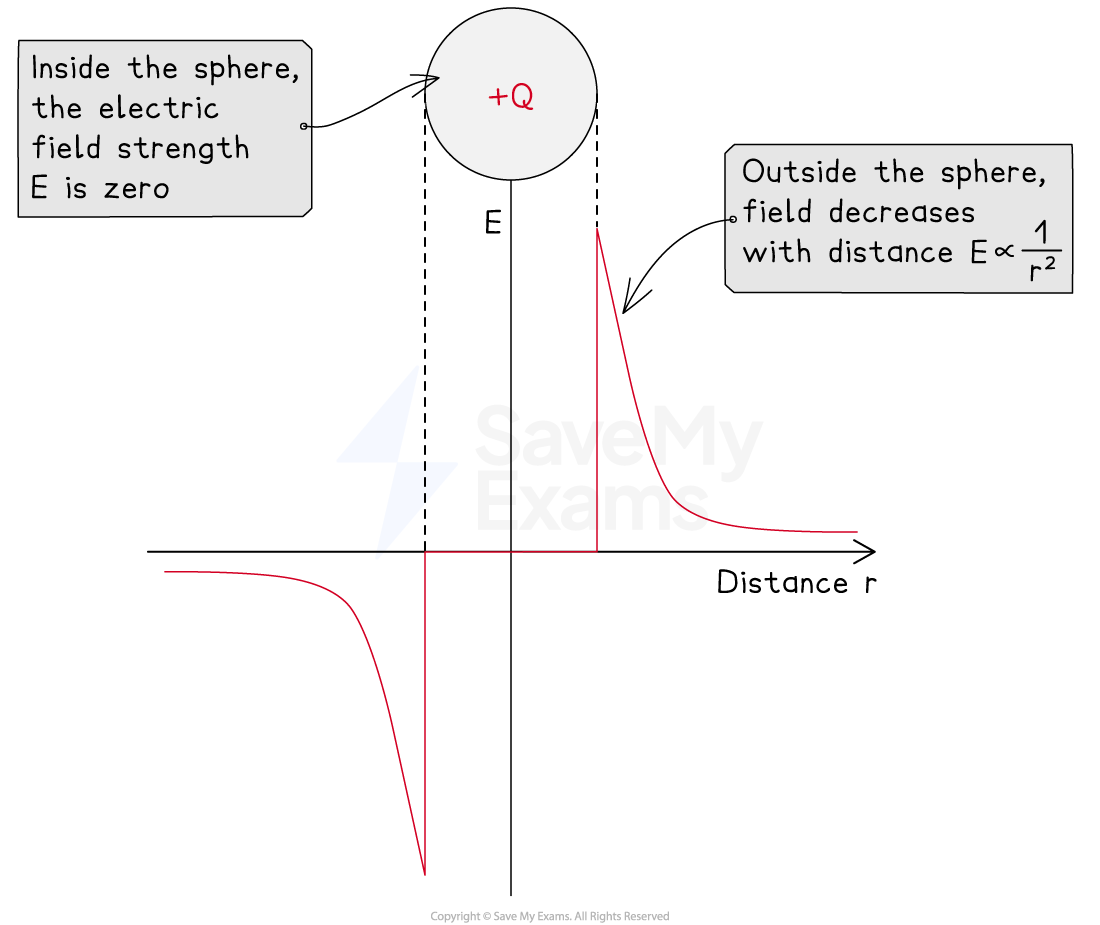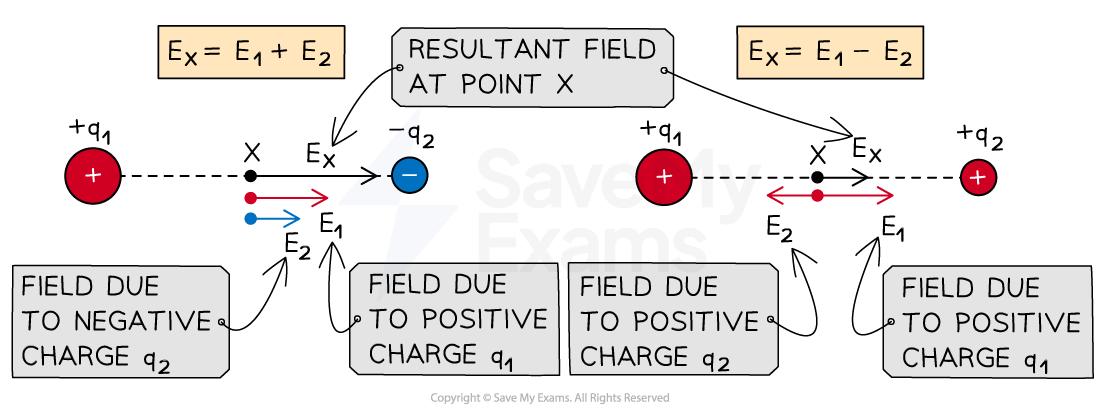Electric Field Strength of a Point Charge (Cambridge (CIE) A Level Physics): Revision Note
Exam code: 9702
Electric field of a point charge
The strength of an electric field due to a point charge decreases with the square of the distance
This is an inverse square law, similar to Coulomb's law
Using Coulomb's law and the electric field strength equation this can be written as:
Where:
Q = the point charge producing the radial electric field (C)
r = distance from the centre of the charge (m)
ε0 = permittivity of free space (F m−1)
Here, q represents the magnitude of a small positive test charge
This equation shows that in a radial electric field, the electric field strength E:
is not constant
follows an inverse square law with distance r
This equation is analogous to the gravitational field strength around a point mass
Graph of field strength against distance for a positive charge

Electric field strength is zero inside a charged sphere and decreases with distance outside the sphere according to an inverse square law
Combining electric fields
Both electric force and field strength are vector quantities
If the charge is negative, the E field strength is negative and points towards the centre of the charge
If the charge is positive, the E field strength is positive and points away from the centre of the charge
Therefore, to find the electric force or field strength at a point due to multiple charges, each field can be combined by vector addition
Vector addition of electric field along the same line

For charges along the same line, the resultant field is the vector addition of the field due to both charges at a particular point
For a point on the same line as two charges q1 and q2, with field strengths E1 and E2 respectively, the magnitude of the resultant field will be:
The sum of the fields, E1 + E2, if they are both in the same direction
The difference between the fields, E1 − E2, if they are in opposite directions
The direction of the resultant field depends on:
The types of charge (positive or negative)
The magnitude of the charges
For a point which makes a right-angled triangle with the charges, the resultant field can be determined using Pythagoras theorem
Vector addition of electric field components

For charges which make a right-angle triangle with point X, the resultant field is the vector addition of the field due to both charges using Pythagoras theorem
Worked Example
A metal sphere of diameter 15 cm is negatively charged. The electric field strength at the surface of the sphere is 1.5 × 105 V m−1.
Determine the total surface charge of the sphere.
Answer:
Step 1: List the known quantities
Electric field strength, E = 1.5 × 105 V m−1
Radius of sphere, r = 15 / 2 = 7.5 cm = 7.5 × 10−2 m
Permittivity of free space, ε0 = 8.85 × 10−12 F m−1
Step 2: Write down the equation for electric field strength
Step 3: Rearrange for charge Q
Recall that, for an external observer, a charged sphere can be considered as a point charge
The field strength at the surface of the sphere is equal to the field strength 15 cm away from a point charge with the same total charge as the sphere
Step 4: Substitute in the values and calculate:
Q = (4π × 8.85 × 10−12) × (1.5 × 105) × (7.5 × 10−2)2 = 9.38 × 10−8 C
The particle has a charge of 9.4 × 10−8 C or 94 nC
Examiner Tips and Tricks
When combining electric fields from multiple charges, remember that the point (e.g. point X in the examples above) represents a positive test charge, so the direction of the electric force or field will correspond to the signs of the charges; the direction of the force or field points away from a positive charge and towards a negative charge.

Unlock more, it's free!
Did this page help you?